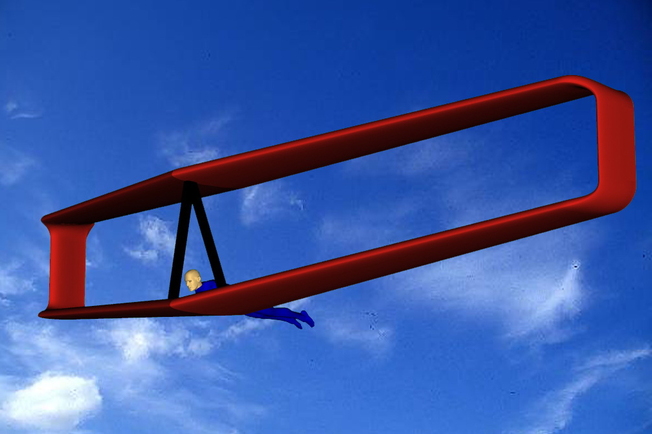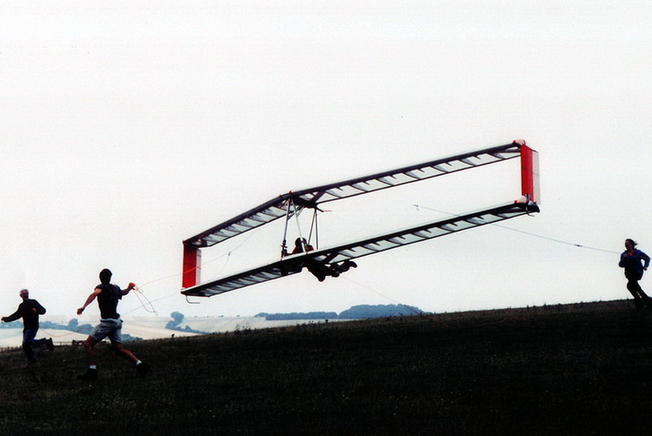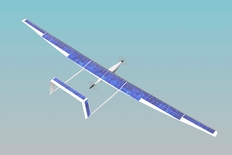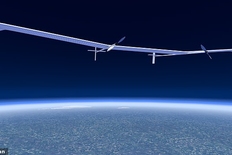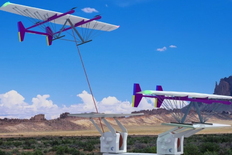Objective: Motorless bi-plane
Project Start: April 2002
Project Delivery: Flight tests 2003 and 2004
Chris Hornzee-Jones designed the concept through to the aerodynamic and structural engineering. He also oversaw prototype construction and conducted flight tests as the pilot of this craft. With this innovative rigid wing hang glider he researched the possibility of manned flight, propelled purely by the human power means available to a single pilot. The International Bognor Birdman competition is an ideal platform to test this, offering a trophy prize for the longest distance or a cash prize for distances over 100m. All crafts fly from Bognor Pier, with only a few metres runway before take-off.
The technical challenge and objective was to produce a good gliding performance while limiting the wing span to only 9m. (A contemporary hang glider would typically have of up to 14m wing span.) The wing span was reduced in order to keep the overall weight down, since it was proposed that the pilot would balance the rigid wings on himself while being attached to a harness. The final configuration featured rigid wings with winglets joining the wing tips, and joined to an A-frame worn by the pilot. The wing frame was constructed in-house using carbon fibre spars, polystyrene foam ribs and mylar film covering. The total weight came to under 40 kg. Flight tests were conducted at a popular hang gliding spot on the Sussex Downs before the bi-plane entered the International Bognor Birdman competition.


